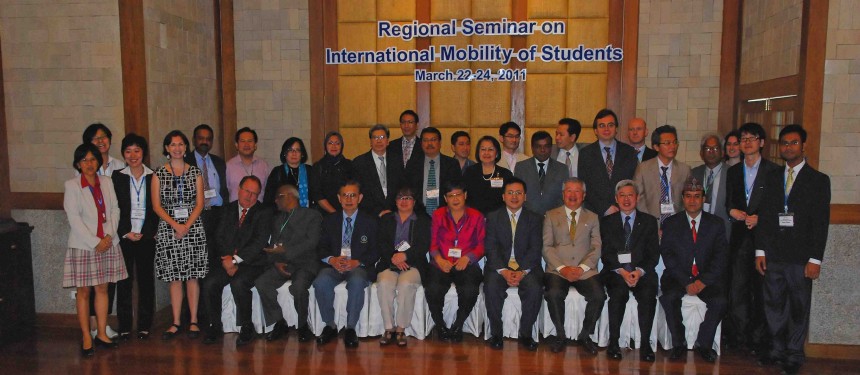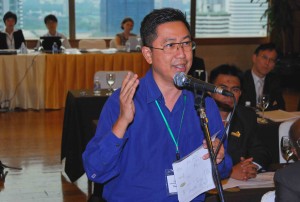Since 1999, the number of students enrolling in educational establishments outside of their home country has risen by 53 per cent, according to Unesco’s Education Research Network (ERI-Net) in the Asia-Pacific. China, accounting for 14.9 per cent of the world’s international students in 2008, plans to attract 500,000 inbound students by 2020, leading a “fight back” by countries in the Asia-Pacific who are concerned about a one-way flow of students from the region.
News and business analysis for Professionals in International Education
Have some pie!
Asia-Pacific to compete for international students

A regional seminar was organised to assess research and experience relating to this trend earlier this year. ERI-Net commented that the international mobility of students “is a topic of great concern to all goverments since it covers the flow of students in and out of their countries. The issues extend beyond education to include economic, cultural and social implications.” Delegates attending the three-day regional seminar heard that Australia, France, Germany, the UK and USA currently enrol more than 50 per cent of all foreign students.
There was a concensus that Asian countries would be positioning themselves in a stronger position to attract students to their countries in the future, reversing the outbound flow somewhat. Professor Changjun Yue, of Peking University, said that the Chinese government is responding to the “powerful need for both foreign talents and Chinese overseas students and scholars”.
China, accounting for 14.9 per cent of the world’s international students in 2008, plans to attract 500,000 inbound students by 2020, he said. In 2009, 238,184 international students were enrolled in China, according to Chinese Ministry of Education statistics, with 68 per cent from the Asian continent (Korea was the single largest source country). This figure rose by 11.2% to 265,090 in 2010.

Nyi Nyi THAUNG, of the Assessment, Information, Monitoring and Statistics (AIMS) Unit in UNESCO, Bangkok
Yue pointed out that despite China’s huge contribution to the international student pot, this was small fry when compared with the 20 million students at university within China. He added that the Chinese government offered scholarships to bright students to study in China and awarded 18,245 such scholarships in 2009, representing eight per cent of total international students.
Nevertheless, concerns about study abroad being a stepping stone to migration were mentioned by Jean Tayag, director at the Office of Policy, Planning, Research and Information at the Philippines Commission on Higher Education. He spoke of an “underlying anxiety that study abroad would just be a stepping stone for eventual migration” for native Asians with valuable skills.
And Yue backed up these concerns, pointing out that from 1978 to 2010, 1,905,400 Chinese students have studied abroad, with just 632,200 returning home; a 33 per cent return rate.
Malaysian universities have developed consultancy activities, short-term professional development courses, adult education classes, and off-shore programmes. It is believed that these measures were essential to progression towards the objectives of the National Higher Education Strategic Plan 2020.
And more than 120 schools in South Korea now have international programmes taught in English. Although South Korea still has a low ratio of international students (1.3 per cent compared to the OECD mean of 8.3 in 2008), the ratio has increased by more than 1000 per cent since 2000.
Still looking? Find by category:


